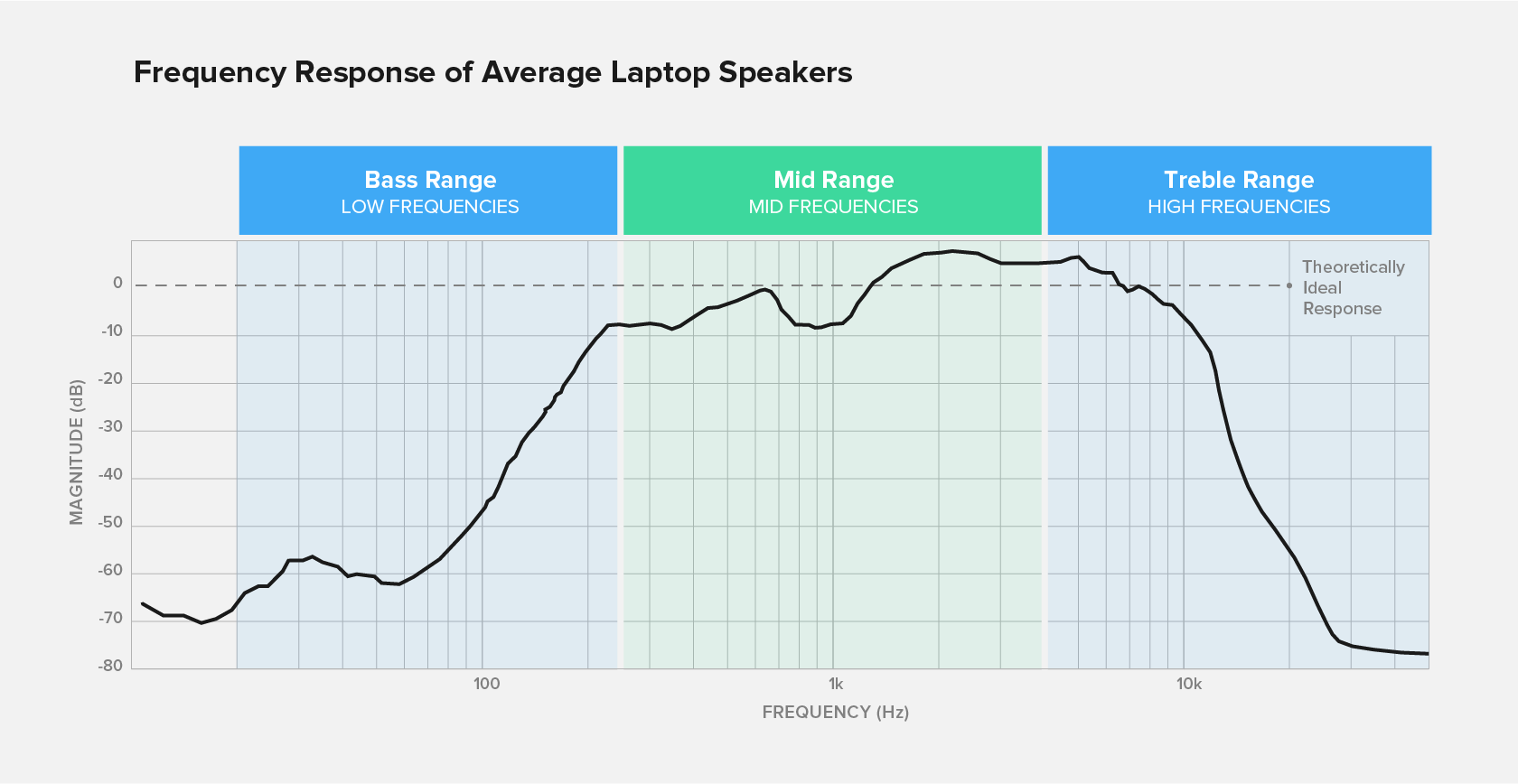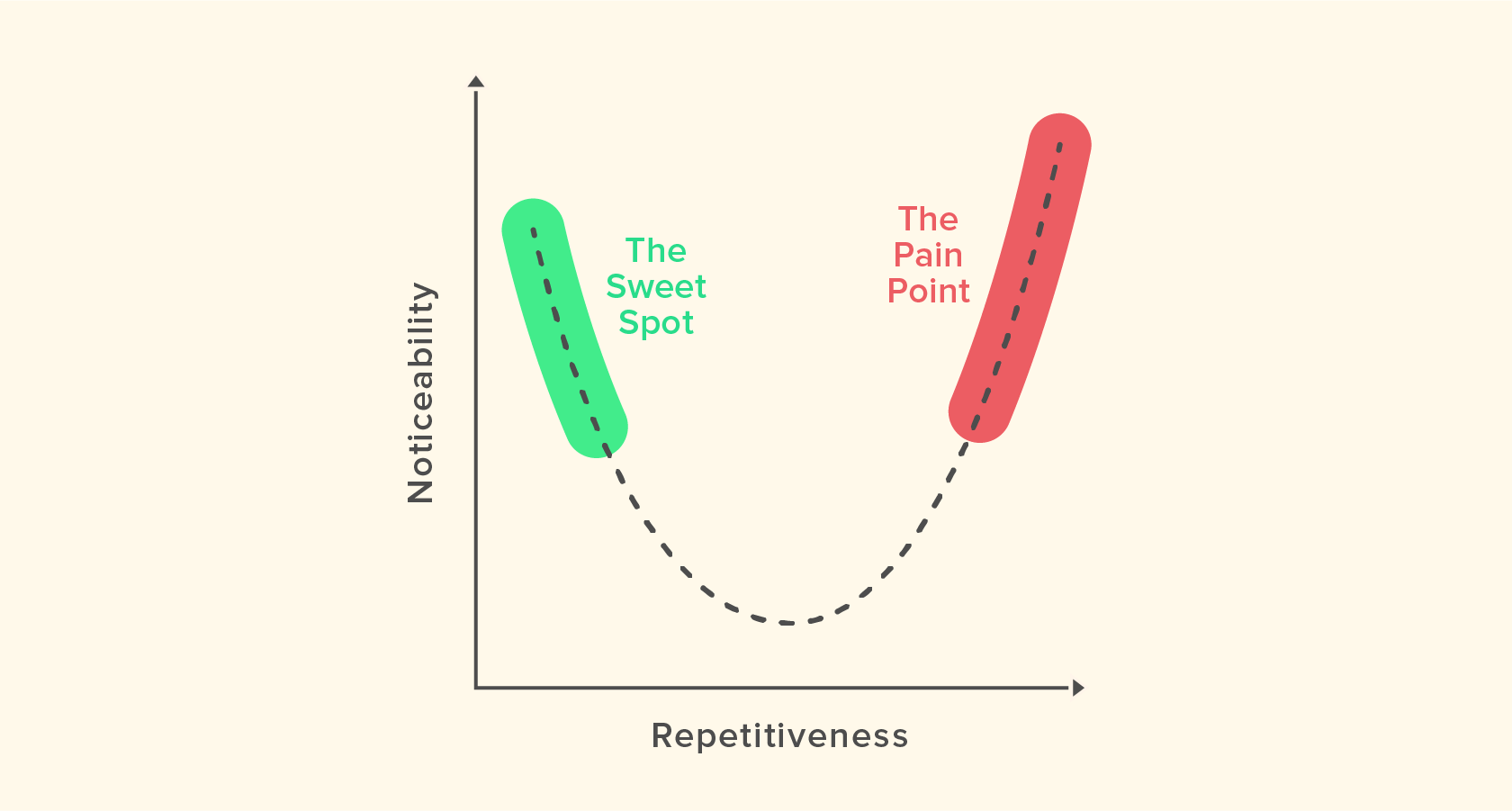ux設計
Mating calls, warning grunts, and supportive coos are some of the sounds heard throughout the animal kingdom. All species use finely-tuned noises to communicate to one another and inform others of an action or behavior. We humans aren’t all that different.
整個動物界都聽到一些交配的聲音,警告的咕unt聲和支持的咕咕聲。 所有物種都使用經過微調的噪音相互交流,并告知其他人一種行動或行為。 我們人類并沒有什么不同。
Although we have a spoken language that is heavily complex, humans also use sound to communicate (the French, for instance, have an array of verbal cues that never form a word). As we’ve constructed cities and societies, we use all sorts of sounds to signify meaning. A truck beeps to warn others as it reverses, the kettle whistles when the water boils and the sound a highly-designed BMW car door makes when it closes signifies engineering prowess. And, with the ever-present digital world, a text message ping draws attention to a notification.
盡管我們的口頭語言非常復雜,但是人類也使用聲音進行交流(例如,法語具有一系列從不構成單詞的口頭提示)。 在構建城市和社會時,我們使用各種聲音來表示含義。 卡車發出嗶嗶聲以警告他人,倒車時水壺會發出汽笛聲,而精心設計的寶馬車門在關閉時發出的聲音則表示工程技術精湛。 并且,在數字世界不斷出現的情況下,短信ping會引起人們對通知的注意。
Audible sounds are integral to making sense of the world and our surroundings. Shouldn’t they be just as considered in the interactive experiences of UX design?
可聽見的聲音對于理解世界和周圍環境至關重要。 難道不應該將它們視為UX設計的交互體驗中的一部分嗎?

為什么要在設計中考慮UX聲音? (Why Consider UX Sounds in Design?)
Just as a dog’s growl provides feedback to an antagonizer, sound in a digital situation should function in the same way. Jakob Nielsen, creator of the 10 Usability Heuristics Principles, is adamant that feedback is essential to a successful user experience. It’s useful in sharing the status of a user’s action, in preventing errors, and in equipping the user to recognize, diagnose, and recover from errors.
正如狗的咆哮向拮抗劑提供反饋一樣,數字情況下的聲音也應以相同的方式起作用。 十項可用性啟發式原理的作者Jakob Nielsen堅持認為,反饋對于成功的用戶體驗至關重要。 在共享用戶操作的狀態,防止錯誤以及使用戶識別,診斷并從錯誤中恢復時,此功能很有用。
What designers often forget is that visual components aren’t the only way to accomplish these things. Sound design in UX can (and should) contribute to:
設計人員經常忘記的是,視覺組件并不是完成這些任務的唯一方法。 UX中的聲音設計可以(并且應該)有助于:
- Providing feedback on a user’s action or system status 提供有關用戶操作或系統狀態的反饋
- Building context and understanding of a use case 建立上下文和對用例的理解
- Drawing attention to important information, such as a warning or opportunity 提請注意重要信息,例如警告或機會
- Establishing brand personality and recognition 建立品牌個性和認可度
如何平衡形式和功能 (How to Balance Form and Function)
A sound that is beautiful but doesn’t serve a UX purpose and a sound that functions but doesn’t match the brand’s tone of voice are both missing critical components. Creating interface sounds involves both an ergonomic/usability perspective and a creative/branding one. The key to making them converge into a refined final result is to think of them as interdependent. The following tips will provide a guide for creating sounds as part of UX design that are both useful and beautiful.
美觀但不能滿足UX目的的聲音和有效但與品牌的語氣不匹配的聲音都缺少關鍵要素。 創建界面聲音既涉及人體工程學/可用性角度,也涉及創意/品牌角度。 使它們融合為最終結果的關鍵是將它們視為相互依存的。 以下技巧將提供有關在UX設計中創建有用且優美的聲音的指南。
一,注重效用 (First, Focus on Utility)
When interacting with features on a product, people love what they find useful. Audio features are no different. Therefore, before diving into Ableton to design striking sound effects, designers should first think about the key actions for which users might want to receive feedback.
當與產品的功能交互時,人們會喜歡他們認為有用的東西。 音頻功能沒有什么不同。 因此,在進入Ableton設計引人注目的音效之前,設計人員應首先考慮用戶可能希望收到反饋的關鍵動作。
The best way to identify possibilities for sound cues is to look at the user flow. Consider where sound can enhance the full user experience. Is the upload done? Did something go wrong while saving a file? Is the device charging? Does the user need to act on something? The function of sound can be most effective when providing audible feedback to an interaction.
識別聲音提示可能性的最佳方法是查看用戶流。 考慮在哪里聲音可以增強完整的用戶體驗。 上傳完成了嗎? 保存文件時出了什么問題? 設備正在充電嗎? 用戶需要采取行動嗎? 向交互提供可聽見的反饋時,聲音功能最有效。
使用隱喻代替擬態 (Use Metaphors Instead of Skeuomorphism)
When creating a “match between system and real world” (a fundamental usability principle from Nielsen’s Usability Heuristics) a designer can either reference physical objects or feelings and experiences.
當創建“系統與現實世界之間的匹配”(Nielsen的可用性啟發法的基本可用性原則)時,設計師可以引用物理對象或感覺和體驗。
The first approach is called skeuomorphism, a method that makes digital interfaces look or flow like their analog counterparts. You’ve probably seen this first hand if you’ve ever used Apple’s Notes app mimicking a yellow lined pad of paper, or if you’ve deleted a file and heard the crumpling of paper.
第一種方法稱為擬態 ,該方法使數字接口的外觀或流量類似于模擬接口。 如果您曾經使用過Apple的Notes應用程序來模仿黃線的紙墊,或者您刪除了文件并聽到了紙的折皺,則可能已經親眼目睹了。
While this strategy might seem like a user-friendly solution, it generally renders soulless interfaces. Skeuomorphism rarely creates an emotional bond with a user. Unless the design calls for 90s nostalgia, it’s best to not use literal visuals and sound effects.
盡管此策略看起來像是一種用戶友好的解決方案,但它通常呈現出簡潔的界面。 擬態很少會與用戶產生情感紐帶。 除非設計要求具有90年代的懷舊情調,否則最好不要使用文字視覺效果和聲音效果。
A more humanized and sophisticated approach is to evoke or mimic the emotions surrounding a certain interaction. Designers can use the sonic metaphor: abstract audible feedback that users can immediately interpret and recognize because it feels like experiences they’ve had in the past. Emotions associated with scenarios like a surprise, a new beginning, and completing a task can be incorporated into their digital counterparts.
一種更加人性化和復雜的方法是喚起或模仿圍繞某種交互的情感。 設計人員可以使用聲波比喻 :抽象的聲音反饋,用戶可以立即解釋和認識,因為感覺他們已經在過去的經驗。 與情景相關聯的情緒(例如驚喜,新的開始和完成任務)可以整合到他們的數字對應物中。
Unlike skeuomorphism, metaphors do not demand literal visual or sound recognition. Rather, the sensation a metaphor evokes during an interaction connects to a familiar and emotional experience.
與擬態不同,隱喻不需要文字上的視覺或聲音識別。 相反,隱喻在互動過程中引起的感覺與熟悉的情感體驗相關。
創建“聲音樣式指南” (Create a “Sound Style Guide”)
A brand or design system uses a set of predetermined elements at every touchpoint that establishes consistency and cohesiveness in the user experience. Sound should be treated the same way as creating a style guide for a visual interface. It should be seen as various rearrangements of a set of elements. Perhaps a product could use similar timbres for each tune, or incorporate natural sounds, such as water drops, windy whispers, and a sand rattle.
品牌或設計系統在每個接觸點使用一組預定元素,以在用戶體驗中建立一致性和內聚性。 聲音應與為視覺界面創建樣式指南的方式相同。 應該將其視為一組元素的各種重排。 也許某個產品的每首曲子都可以使用類似的音色,或者融合自然的聲音,例如水滴,刮風的細語和沙嘎聲。
It’s important to note that these concepts both emerge from, and build a product’s brand personality. Visual UI design components, microinteractions, and sounds will all aggregate in the user’s perspective and shape how they perceive a brand.
重要的是要注意,這些概念都源于產品,并建立了產品的品牌個性。 視覺UI設計組件,微交互和聲音都將聚集在用戶的角度,并塑造他們對品牌的看法。
保持UX聲音簡單 (Keep UX Sounds Simple)
Dieter Rams, the iconic product designer, crafted ten principles of design that still stand strong today. The tenth and final principle is: “Good design is as little design as possible. Less, but better — because it concentrates on the essential aspects, and the products are not burdened with non-essentials. Back to purity, back to simplicity.” Sounds should be concise in their intent, rather than excessive.
標志性的產品設計師Dieter Rams精心制定了十項設計原則,這些原則在今天仍然有效。 第十個也是最后一個原則是:“好的設計就是盡可能少的設計。 更少,但更好-因為它專注于基本方面,并且產品不包含不必要的負擔。 回到純粹,回到簡單。” 聲音的意圖應該簡潔明了,而不是過度。
Harmonically complex sounds indicate priority and draw attention to things of great importance. Consequently, when sound provides feedback to an action that doesn’t require immediate attention, a complex sound isn’t appropriate. In fact, it can cause more harm than good if a user addresses the sound to find nothing of importance.
和諧的聲音表示優先級,并引起人們對重要事物的注意。 因此,當聲音為不需要立即關注的動作提供反饋時,復雜的聲音就不合適了。 實際上,如果用戶對聲音發聲,但沒有發現任何重要內容,則可能帶來的弊大于利。
The same level of simplicity applies to the length of a sound in UX design. As a rule of thumb, a transition or micro-interaction sound should never last more than 0.3 seconds longer than its associated animation. A sound should be just short enough to be perceived by the user. As a reference point, the Samsung whistle notification sound is overly excessive.
UX設計中的聲音長度同樣適用于簡單程度。 根據經驗,過渡或微交互聲音的持續時間不得比其關聯動畫的持續時間長0.3秒。 聲音應該短到足以被用戶感知。 作為參考, 三星的哨聲通知聲音過大。
為設備設計UX聲音 (Design UX Sounds for the Device)
When a mobile or web app is in the hands of a user, it’s likely the sounds are going to be reproduced through not-so-hi-fi speakers. Usually, mobile devices and laptops are designed to cut low frequencies down and boost mid-high frequencies. Designers should listen to their tunes through the devices they are designing for and ask:
當移動或網絡應用程序在用戶手中時,聲音很可能會通過不太高保真的揚聲器再現。 通常,移動設備和筆記本電腦的設計目的是降低低頻并提高中高頻。 設計師應通過其設計的設備聆聽自己的音樂,并提出以下要求:
Does the sound feel heavy or muffled? Remove some of the lower frequencies and accentuate the higher ones.
聲音是否沉重或悶悶不樂? 刪除一些較低的頻率,并強調較高的頻率。
Does the sound feel squeaky or brittle? Carve out some of the higher frequencies and fatten up the medium to low range.
聲音是否刺耳或發脆? 消除一些較高的頻率,并提高中低頻范圍。
Since middle-range frequencies correspond to the human voice, portable devices tend to have a fairly decent response. Designers should use that to their advantage.
由于中頻頻率對應于人類的聲音,因此便攜式設備往往具有相當不錯的響應。 設計師應該利用它來發揮自己的優勢。

注意UX聲音設計中的重復容差 (Mind the Repetitive Tolerance in UX Sound Design)
Have you ever set your favorite upbeat song as your alarm sound? How long did it take for it to become unbearable?
您是否曾經將自己喜歡的歡樂歌曲設置為鬧鐘聲音? 它變得難以忍受需要多長時間?
Repetitive tolerance indicates that there is a limit to how often we can stand hearing the same sound over and over. It might be satisfying to hear a “ta-da” sound every time a task is marked as complete, but by the 100th time, people might prefer to use an alternative (silent) tool to check off completed tasks. Or, worse yet, the undesirable sound might have an impact far beyond the product and cause the user to procrastinate just to avoid hearing the annoying tune. There’s a limit for the number of times a sound is repeated before we wish it never existed. What’s more, the threshold falls significantly lower the more complex a sound becomes.
重復容忍度表示我們一次又一次聽到相同聲音的站立時間是有限的。 每次將任務標記為完成時,聽到“ ta-da”聲音可能會讓人滿意,但是到第100次,人們可能更喜歡使用替代(靜音)工具來檢查已完成的任務。 或者,更糟糕的是,不良聲音的影響可能遠遠超出產品范圍,并導致用戶拖延,只是為了避免聽到令人討厭的聲音。 在我們不希望聲音消失之前,重復聲音的次數是有限制的。 而且,聲音變得越復雜,閾值就會大大降低。
Audio clutter is often more annoying to users than a messy visual interface. Users can — and will — mute apps that have repetitively aggravating sounds, such as a beep every five seconds.
音頻混亂通常比混亂的視覺界面更使用戶煩惱。 用戶可以并且將會使靜音應用程序具有反復加重的聲音,例如每五秒鐘發出一聲嗶嗶聲。
As a general rule of thumb, the more frequently a sound occurs in a product, the more subtle, shorter, and warmer it needs to be.
根據一般經驗,聲音在產品中出現的頻率越高,它所需要的聲音就越微妙,更短且更溫暖。

測試UX聲音 (Testing UX Sounds)
User testing is standard practice for UX design. It’s just as important to test an interface with and without sound — mute and unmute. The user experience should be equally cohesive in both states. Additionally, users should always have an easy way to mute the product’s sound during testing and the frequency at which they toggle it on and off should be recorded.
用戶測試是UX設計的標準做法。 測試有無聲音的界面(靜音和取消靜音)也同樣重要。 在這兩種狀態下,用戶體驗應具有同等的凝聚力。 此外,在測試過程中,用戶應始終有一種簡便的方法來靜音產品的聲音,并應記錄他們打開和關閉產品的頻率。
All users’ abilities should be included in testing. While audio feedback can be very useful for visually-impaired people, a visual counterpart might be important to ensure that hearing-impaired users don’t miss an essential part of a product.
測試中應包括所有用戶的能力。 盡管音頻反饋對于視障人士非常有用,但視覺對應對于確保聽障用戶不會錯過產品的重要部分可能很重要。
Just like the rest of an interface, iteration is fundamental to achieving sound effects that users will love. Designers should be on the lookout for unnecessary sound cues as well as interesting opportunities where sound could enhance the experience.
就像界面的其余部分一樣,迭代對于實現用戶所喜歡的聲音效果至關重要。 設計師應該注意不必要的聲音提示,以及可以改善聲音體驗的有趣機會。
釋放UX聲音的力量 (Unleash the Power of UX Sounds)
There are biological reasons why humans rely on sounds to communicate and make sense of the world around them — audible cues often provide feedback to an action or behavior. UX designers who integrate sound design into user experiences can create a multi-sensory interaction that will prove to be very effective. As smart devices become more ubiquitous in modern society, sounds that are both beautiful and useful can enrich an experience in a non-invasive way. Sound can greatly contribute to an impactful product’s success.
人類有生物學的原因會依靠聲音進行交流并了解周圍的世界-聽覺提示通常會為行為或行為提供反饋。 將聲音設計整合到用戶體驗中的UX設計師可以創建多感官交互,這將被證明是非常有效的。 隨著智能設備在現代社會中變得越來越普遍,既美觀又有用的聲音可以通過非侵入性方式豐富體驗。 聲音可以極大地促進有影響力的產品的成功。
Originally published on the Toptal Design Blog. Special thanks to Jordan DeVos and Miklos Philips.
最初發布在Toptal設計博客上 。 特別感謝Jordan DeVos和Miklos Philips。
翻譯自: https://uxdesign.cc/sound-advice-a-quick-guide-to-designing-ux-sounds-29e0aeca5f63
ux設計
本文來自互聯網用戶投稿,該文觀點僅代表作者本人,不代表本站立場。本站僅提供信息存儲空間服務,不擁有所有權,不承擔相關法律責任。 如若轉載,請注明出處:http://www.pswp.cn/news/274384.shtml 繁體地址,請注明出處:http://hk.pswp.cn/news/274384.shtml 英文地址,請注明出處:http://en.pswp.cn/news/274384.shtml
如若內容造成侵權/違法違規/事實不符,請聯系多彩編程網進行投訴反饋email:809451989@qq.com,一經查實,立即刪除!

![[ckeditor系列]ckeditor 自己寫的一個簡單的image上傳js 運用iframe的ajax上傳](http://pic.xiahunao.cn/[ckeditor系列]ckeditor 自己寫的一個簡單的image上傳js 運用iframe的ajax上傳)



swc與swf的區別)










-linux設備模型)

